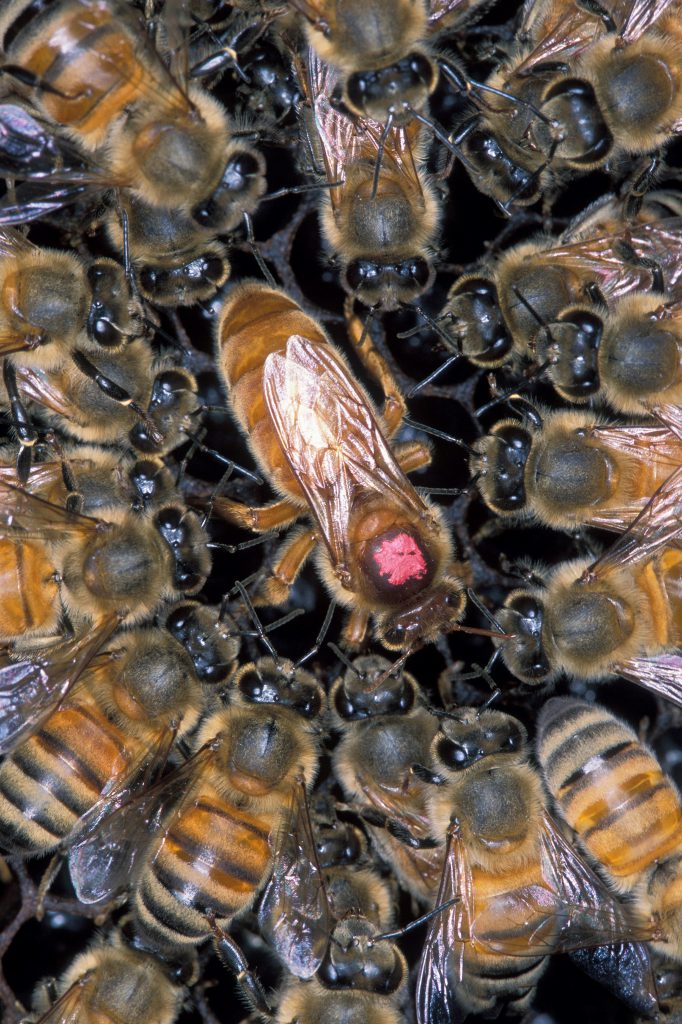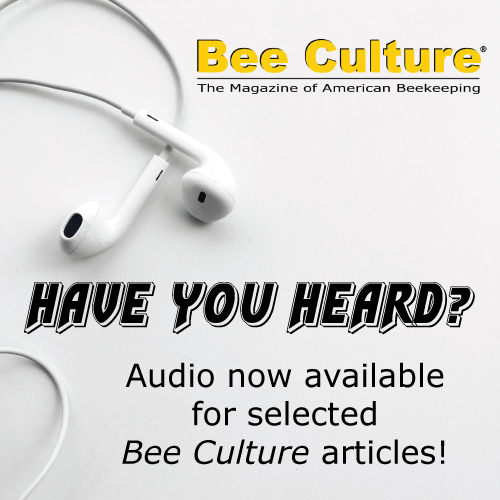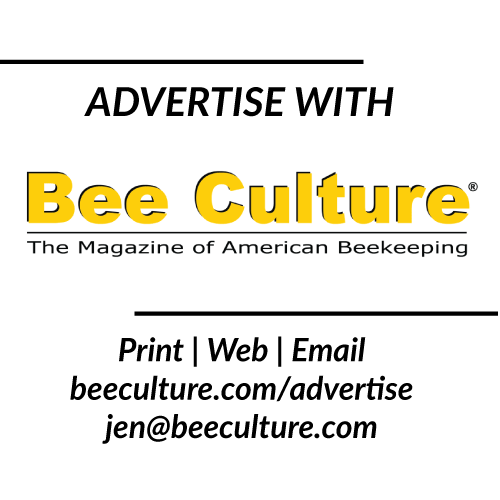 Nestmate Recognition
Nestmate Recognition
By: Clarence Collison
Pheromones are involved in intraspecific chemical communication; however, the glands associated with compounds used in nestmate recognition in honey bees remain elusive. This search is difficult since nestmate cues can arise from both within the colony, and from the environment (Kalmus and Ribbands, 1952). For example, Downs and Ratnieks (1999) found no evidence that honey bee guards used heritable cues; instead, guards appear to rely exclusively on environmental cues to distinguish nestmates from non-nestmates. However, nestmate cues can also be produced by the individual, and thus must be under genetic control (Breed, 1983; Page Jr. et al., 1991). A further factor is that the wax used to build comb in the colony is both produced and manipulated by the bees, which means it may be a medium into which recognition cues are transferred (Breed et al., 1998). Therefore, Breed et al. (1998) stated that no single factor is responsible for nestmate recognition in honey bees; rather, all three factors (genetically determined cuticular signatures, exposure to comb wax, and environmental cues e.g. floral cues) seem to work together (Martin et al., 2018).
Comb wax in honey bee colonies serves as a source and medium for transmission of recognition cues. Worker honey bees learn the identity of their primary nesting material, the wax comb, within an hour of emergence. In an olfactometer, bees discriminate between combs on the basis of odor; they prefer the odors of previously learned combs. Representatives of three of the most common compound classes in bee’s wax were surveyed for effects on nestmate discrimination behavior. Hexadecane, octadecane, tetracosanoic acid and methyl docosanoate make worker honey bees less acceptable to their untreated sisters. Other similar compounds did not have this effect. These findings support the hypothesis that nestmate recognition in honey bees is mediated by many different compounds, including some related to those found in comb wax (Breed and Stiller, 1992).
Breed et al. (1998) investigated how kin recognition cues develop and cue differentiation between honey bee colonies. Exposure to the wax comb in colonies is a critical component of the development of kin recognition cues. In this study, they determined how the cues develop under natural conditions (in swarms), whether the genetic source and age of the wax affect cue ontogeny, and whether exposure to wax, as in normal development, affects preferential feeding among bees within social groups. Cue development in swarms coincided with wax production, rather than with the presence of brood or the emergence of new workers; this finding supported previous observations concerning the importance of wax in cue ontogeny. Effective cue development required a match between the genetic source of the workers attempting to enter the hive, the wax to which they were exposed and the guards at the hive entrance. The wax must also have been exposed to the hive environment for some time. Cues gained from wax did not mask or override cues used in preferential feeding interactions; this finding supports the contention that two recognition systems, one for nestmate recognition and the other for intra-colonial recognition, are present.
Recognition of nestmates from aliens is based on olfactory cues, and many studies have demonstrated that such cues are contained within the lipid layer covering the insect cuticle. These lipids are usually a complex mixture of tens of compounds in which aliphatic hydrocarbons are generally the major components. Dani et al. (2005) tested whether artificial changes in the cuticular profile through supplementation of naturally occurring alkanes and alkenes in honey bees affect the behavior of nestmate guards. Compounds were applied to live foragers in microgram quantities and the bees returned to their hive entrance where the behavior of the guard bees was observed. In this fashion, they compared the effect of single alkenes with that of single alkanes; the effect of mixtures of alkenes versus that of mixtures of alkanes and the whole alkane fraction separated from the cuticular lipids versus the alkene fraction. With only one exception (the comparison between n-C19 and (Z)9-C19), in all the experiments bees treated with alkenes were attacked more intensively than bees treated with alkanes. This led them to conclude that modification of the natural chemical profile with the two different classes of compounds has a different effect on acceptance and suggests that this may correspond to a differential importance in the recognition signature.
 Cuticular hydrocarbons (CHCs) function as recognition compounds in honey bees. It is not clearly understood where CHCs are stored in the honey bee. Martin et al. (2018) investigated the hydrocarbons and esters found in five major worker honey bee exocrine glands, at three different developmental stages (newly emerged, nurse and forager) using a high temperature GC analysis. They found the hypopharyngeal gland contained no hydrocarbons nor esters, and the thoracic salivary and mandibular glands only contained trace amounts of n-alkanes. However, the cephalic salivary gland (CSG) contained the greatest number and highest quantity of hydrocarbons relative to the five other glands with many of the hydrocarbons also found in the Dufour’s gland, but at much lower levels. They also discovered a series of oleic acid wax esters that lay beyond the detection of standard GC columns. As a bee’s activities changed, as it aged, the types of compounds detected in the CSG also changed. For example, newly emerged bees have predominately C19-C23n-alkanes, alkenes and methyl-branched compounds, whereas the nurses’ CSG had predominately C31:1 and C33:1 alkene isomers, which are replaced by a series of oleic acid wax esters in foragers. These changes in the CSG were mirrored by corresponding changes in the adults’ CHCs profile. The CSG is a major storage gland of CHCs. As the CSG duct opens into the buccal cavity (mouth), the hydrocarbons can be worked into the comb wax and could help explain the role of comb wax in nestmate recognition experiments.
Cuticular hydrocarbons (CHCs) function as recognition compounds in honey bees. It is not clearly understood where CHCs are stored in the honey bee. Martin et al. (2018) investigated the hydrocarbons and esters found in five major worker honey bee exocrine glands, at three different developmental stages (newly emerged, nurse and forager) using a high temperature GC analysis. They found the hypopharyngeal gland contained no hydrocarbons nor esters, and the thoracic salivary and mandibular glands only contained trace amounts of n-alkanes. However, the cephalic salivary gland (CSG) contained the greatest number and highest quantity of hydrocarbons relative to the five other glands with many of the hydrocarbons also found in the Dufour’s gland, but at much lower levels. They also discovered a series of oleic acid wax esters that lay beyond the detection of standard GC columns. As a bee’s activities changed, as it aged, the types of compounds detected in the CSG also changed. For example, newly emerged bees have predominately C19-C23n-alkanes, alkenes and methyl-branched compounds, whereas the nurses’ CSG had predominately C31:1 and C33:1 alkene isomers, which are replaced by a series of oleic acid wax esters in foragers. These changes in the CSG were mirrored by corresponding changes in the adults’ CHCs profile. The CSG is a major storage gland of CHCs. As the CSG duct opens into the buccal cavity (mouth), the hydrocarbons can be worked into the comb wax and could help explain the role of comb wax in nestmate recognition experiments.
Worker honey bees are able to discriminate between combs on the basis of genetic similarity to a learned comb. The nestmate recognition cues that they acquire from the comb also have a genetically correlated component. Cues are acquired from comb in very short exposure periods (five minutes or less) and can be transferred among bees that are in physical contact. Gas chromatographic analysis demonstrates that bees with exposure to comb have different chemical surface profiles than bees without such exposure. These results support the hypothesis that comb-derived recognition cues are highly important in honey bee nestmate recognition. These cues are at least in part derived from the wax itself, rather than from floral scents that have been absorbed by the wax (Breed et al., 1995).
Experiments indicated that the most important recognition pheromones are the fatty acids, particularly palmitic acid, palmitoleic acid, oleic acid, linoleic acid, linolenic acid and tetracosanoic acid. These fatty acids are mixed with the wax hydrocarbons from wax glands, molded into comb and then transferred onto the workers as they contact the comb. The result is a colony level signature that varies little among workers in a colony. Newly emerged workers have few external fatty acids or hydrocarbons. Oleic acid is more abundant than the other fatty acids on newly emerged bees, but the amount of oleic acid on the cuticle does not vary significantly among colonies. Newly emerged workers are accepted even though they have no signature yet; the “password” for new bees to be admitted to their colony is apparently the lack of a signal. This conclusion is corroborated by the finding that guards tend to treat sodium hydroxide-washed older bees as if they are newly emerged (Breed, 1998).
The integration of recognition cues is described as follows. Fatty acids and hydrocarbons are components of the wax comb that is produced by the bees. The relative abundances of fatty acids and hydrocarbons in wax varies among colonies, giving them unique chemical signatures. Food odors may also be absorbed by the comb, adding to its uniqueness. Newly emerged bees produce their own hydrocarbon coating, which is modified as they move around the nest by the addition of hydrocarbons and fatty acids from the comb. Of the compounds tested in the laboratory, fatty acids are the most important recognition pheromones, but other, as yet untested compounds may also contribute to the recognition odor. Hydrocarbons have generally been assumed to be the primary recognition pheromones of honey bees. However, none of the major structural hydrocarbons of honey bees (i.e., n-alkanes) yields a positive result in a recognition bioassay, nor do these compounds differ significantly in relative concentration among families of bees (Breed, 1998).
The environmental and genetic components of recognition are difficult to separate even in controlled conditions. Getz and Smith (1983) showed that the honey bee discriminates between full and half-sisters raised in the same hive, on the same brood comb in neighboring cells, thus demonstrating a significant genetic component to the recognition process.
Nestmate recognition information can come from either contact chemoreception or olfaction. Mann and Breed (1997) investigated what role airborne olfactory cues play in nestmate recognition by honey bee colony guards, and how do these signals affect guard orientation and behavior? They demonstrated that airborne cues play a significant role in guard bee recognition of nestmates and non-nestmates. Exposure of a guard bee to the scent of a non-nestmate resulted in increased locomotory rate and changes in the directional orientation of guard bees. Exposure to scent of a non-nestmate did not, however, increase the likelihood that a second non-nestmate would be attacked when placed with the guard. Observations of guard behavior at colony entrances indicate that guards discriminate nestmates from non-nestmates with high efficiency.
Floral oils are an important component of the honey bee’s olfactory environment. Bowden et al. (1998) used laboratory and field tests to determine whether floral oils affect nestmate recognition in honey bees. In the laboratory, newly emerged worker bees, that have not been exposed to comb wax, responded more aggressively to bees that had been exposed to floral oils than unexposed control bees. In the field, guard bees did not respond differently to foragers that had been exposed to floral oils. Floral oils may play a supplementary role in nestmate recognition; however, if they have any effect, it is secondary to cues acquired from comb during development.
Downs et al. (2000) investigated the effect that floral oils (anethole, citronellal, limonene and linalool) have on the probability of nestmates and non-nestmates being accepted by guard bees at nest entrances. Floral oils did not affect the probability of workers, either nestmates or non-nestmates, being accepted by guards. However, the presence of floral oils did increase the time taken for a guard to reject an introduced bee. These data show that guards are sensitive to floral oils but use other recognition cues when assessing colony affiliation.
Honey bees have the ability to distinguish among groups of larvae that are destined to become queens and preferentially rear highly related nestmate larvae over less related larvae that are not nestmates (Page and Erickson, 1984).
Colonies of honey bees from two patrilines (cordovan and dark) were established and observations were made on the behavior shown by the worker bees in rearing queen larvae within their colonies. The relationship among the bees within these colonies was either r = ¾ (super-sisters) or r = ¼ (half sisters). The worker bees showed preferential care to the queen larvae that were of their own patriline. Workers of the cordovan patriline showed a stronger preference for larvae of their own patriline than did the dark workers. Cordovan workers also showed a higher rate of visitation, indicating behavioral differences between the patrilines. These results suggest that kin selection is operating on honey bee behavior used in rearing reproduction (Noonan, 1986).
A honey bee queen is usually attacked if she is placed among the workers of a colony other than her own. This rejection occurs even if environmental sources of odor, such as food, water and genetic origin of the workers, are kept constant in laboratory conditions. The genetic similarity of queens determines how similar their recognition characteristics are; inbred sister queens were accepted in 35% of exchanges, outbred sister queens in 12% and non-sister queens in 0%. Carbon dioxide narcosis (stuper, unconsciousness) results in worker honey bees accepting non-nestmate queens. A learning curve is presented, showing the time after narcosis required by workers to learn to recognize a new queen. In contrast, workers transfer results in only a small percentage of the workers being rejected. The reason for the difference between queens and workers may be because of worker and queen recognition cues having different sources (Breed, 1981).
Boch and Morse (1974, 1979) have shown that honey bee queens can be recognized individually by swarms of bees. They found that marking a queen with shellac-based paint to give her a distinctive odor resulted in workers later exhibiting a preference for any queen marked with that paint. However, their experiments do not show whether the odors used by workers to recognize queens are produced by the queens or are environmentally acquired. In a series of studies concerned with queen introduction into colonies, Szabo (1974, 1977) also found that workers could discriminate among queens, but did not approach the issue of the source of recognition odors directly. It was also found that factors such as the age and weight of an introduced queen could affect worker choice among introduced queens. Yadava and Smith (1971) found that the mandibular gland contents of the queen were important in the release of worker aggression towards an introduced queen (Breed, 1981).
References
Boch, R. and R.A. Morse 1974. Discrimination of familiar and foreign queens by honey bee swarms. Ann. Entomol. Soc. Am. 67: 709-711.
Boch, R. and R.A. Morse 1979. Individual recognition of queens by honey bee swarms. Ann. Entomol. Soc. Am. 72: 51-53.
Bowden, R.M., S. Williamson and M.D. Breed 1998. Floral oils: their effect on nestmate recognition in the honey bee, Apis mellifera. Insectes Soc. 45: 209-214.
Breed, M.D. 1981. Individual recognition and learning of queen odors by worker honey bees. Proc. Nat. Acad. Sci. USA. 78: 2635-2637.
Breed, M.D. 1983. Nestmate recognition in honey bees. Anim. Behav. 31: 86-91.
Breed, M.D. 1998. Recognition pheromones of the honey bee. Bioscience 48: 463-470.
Breed, M.D. and T.M. Stiller 1992. Honey bee, Apis mellifera, nestmate discrimination: hydrocarbon effects and the evolutionary implications of comb choice. Anim. Behav. 43: 875-883.
Breed, M.D., M.F. Garry, A.N. Pearce, B.E. Hibbard, L.B. Biostad and R.E. Page, Jr. 1995. The role of wax comb in honey bee nestmate recognition. Anim. Behav. 50: 489-496.
Breed, M.D., E.A. Leger, A.N. Pearce, and Y.J. Wang 1998. Comb wax effects on the ontogeny of honey bee nestmate recognition. Anim. Behav. 55:13-20.
Dani, F.R., G.R. Jones, S. Corsi, R. Beard, D. Pradella and S. Turillazzi 2005. Nestmate recognition cues in the honey bee: differential importance of cuticular alkanes and alkenes. Chem. Senses 30: 477-489.
Downs, S.G. and F.L.W. Ratnieks 1999. Recognition of conspecifics by honey bee guards (Apis mellifera) uses non-heritable cues applied to the adult stage. Anim. Behav. 58: 643-648.
Downs, S.G., F.L.W. Ratnieks, S.L. Jefferies, and H.E. Rigby 2000. The role of floral oils in the nestmate recognition system of honey bees (Apis mellifera L.). Apidologie 31: 357-365.
Getz, W.M. and K.B. Smith 1983. Genetic kin recognition: honey bees discriminate between full and half sisters. Nature 302: 147-148.
Kalmus, H. and C.R. Ribbands 1952. The origin of the odours by which honey bees distinguish their companions. Proc. R. Soc. Lond. B. 140: 50-59.
Mann, C.A. and M.D. Breed 1997. Olfaction in guard honey bee responses to non-nestmates. Ann. Entomol. Soc. Am. 90: 844-847.
Martin, S.J., M.E. Correia-Oliveira, S. Shemilt, and F.P. Drijfhout 2018. Is the salivary gland associated with the honey bee recognition compounds in worker honey bees (Apis mellifera)? J. Chem. Ecol. 44: 650-657.
Noonan, K.C. 1986. Recognition of queen larvae by worker honey bees (Apis mellifera). Ethology 73: 295-306.
Page, R.E. Jr. and E.H. Erickson Jr. 1984. Selective rearing of queens by worker honey bees: kin or nestmate recognition. Ann. Entomol. Soc. Am. 77: 578-580.
Page, R.E. Jr., R.A. Metcalf, R.I. Metcalf, E.H. Erickson Jr. and R.L. Lampman 1991. Extractable hydrocarbons and kin recognition in honey bee (Apis mellifera L.). J. Chem. Ecol. 17: 745-756.
Szabo, T.I. 1974. Behavioural studies of queen introduction in the honey bee 2. Effect of age and storage conditions of virgin queens on their attractiveness to workers. J. Apic. Res. 13: 127-135.
Szabo, T.I. 1977. Behavioural studies of queen introduction in the honey bee 6. Multiple queen introduction. J. Apic. Res. 16: 65-83.
Yadava, R.R.S. and M.V. Smith 1971. Aggressive behavior of Apis mellifera L. workers towards introduced queens II. Role of mandibular gland contents of the queen in releasing aggressive behavior. Cand. J. Zool. 49: 1179-1183.
Clarence Collison is an Emeritus Professor of Entomology and Department Head Emeritus of Entomology and Plant Pathology at Mississippi State University, Mississippi State, MS.









